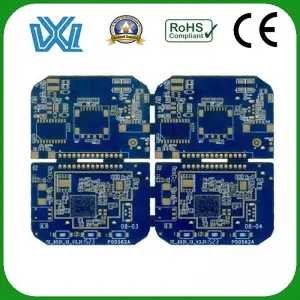introduce
The printed circuit board (PCB) is the backbone of electronic equipment, providing a platform for connecting and supporting various electronic components. Designing a PCB can seem daunting, especially to beginners, but with the right knowledge and approach, it can be an exciting and rewarding process. In this blog, we will walk you through the basic steps and considerations to successfully design your own PCB from scratch.
1. Understand the design requirements
Before embarking on the PCB design journey, it is crucial to clearly define project requirements. Determine the purpose of the board, its intended use, and the specific components it needs to house. Become familiar with the electrical specifications, required size constraints, and any unique features or functions required.
2. Sketch and plan the layout
Creating a schematic is the starting point for any PCB design. Using software tools such as EAGLE, KiCAD or Altium, you can turn your concepts into schematic diagrams. This involves connecting components electronically, directing the path of electrical signals.
Next, the physical layout of the PCB must be planned. Consider factors such as component placement, signal trace routing, power supply placement, and ground planes. Ensure layout complies with industry design rules and best practices to avoid signal interference or noise.
3. Component selection and placement
Selecting the right components for a PCB is critical to its functionality and performance. Consider factors such as voltage rating, current requirements, and compatibility with other components. Research and source high-quality components from reputable suppliers.
Efficient component placement is critical to ensuring an organized and compact PCB design. Strategically place components while considering signal flow, power requirements, and thermal considerations. It’s also important to allow enough clearance between components to avoid any interference during soldering or board assembly.
4. Routing the PCB traces
Trace routing refers to the process of creating copper paths that connect the various components on a PCB. Signal, power, and ground traces must be carefully planned. Follow a layered structure to separate high-speed and sensitive signals from noisy or high-power signals.
Factors such as trace width, length matching, and impedance control play an important role in signal integrity and robustness. Make sure to follow the design rules and guidelines provided by the software tools to avoid any potential issues during the manufacturing process.
5. Rules and Design Validation
After routing is complete, it is critical to verify the design before finalizing it. Perform design rule checking (DRC) to detect any potential errors or violations. This step ensures that the design complies with manufacturing constraints and specifications.
6. Record and generate manufacturing documentation
Accurately documenting the PCB design is critical for future reference and debugging. Generate necessary manufacturing files, including Gerber files, drill files, and Bill of Materials (BOM). Double-check the files to make sure they accurately represent your design.
in conclusion
Designing your own PCB from scratch may seem like a daunting task at first, but with patience, practice, and the right approach, it can become an enjoyable experience. By understanding design requirements, carefully planning layout, selecting appropriate components, routing efficiently, and ensuring design verification, you can create functional and reliable PCBs. So why wait? Dive into the world of PCB design and bring your electronics projects to life!
Post time: Jun-19-2023

